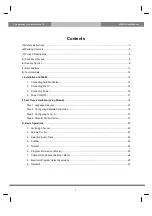
FT-950
Operating Manual
Vertex Standard Co., Ltd.
24
Pressing and holding in this key for two seconds (until the double beep) copies the
current operating data into the currently selected memory channel, overwriting any
previous data stored there.
47. [BAND] Keys
These keys allow one-touch selection of the desired Amateur band (1.8 ~ 50 MHz).
What’s more, these keys may be used for direct entry of a desired operating frequency
during VFO operation.
48. MODE Switches
Pressing one of these switches selects the operating mode. Per the chart below,
repeated presses of a particular switch may cause the precious mode to be selected
from within a mode group (for example pressing [SSB] button repeatedly toggles
between “LSB” and “USB” mode.
Switch
Variable Mode Selections
[SSB] LSB
USB
[CW] CW(LSB)
CW(USB)
[AM/FM] AM
FM
[RTTY/PKT] RTTY(LSB)
RTTY(USB) PKT(LSB) PKT(USB) PKT(FM)
49. [ATT] Switch
This button selects the degree of attenuation, if any, to be applied to the receiver input.
Available selections are –6 dB, –12 dB, –18 dB, or OFF, and the selected attenuation
level appears in the ATT column of the Block Diagram Display on the display.
Advice: The Attenuator may be used in conjunction with the [IPO] switch to provide
two stages of signal reduction when an extremely strong signal is being received.
50. [IPO] (Intercept Point Optimization) Switch
This button may be used to set the optimum front end characteristics of the receiver
circuit for a very strong-signal environment. Available selections are AMP 1 (low
distortion amplifier), AMP 2 (2-stage low-distortion RF amplifier), or ON (bypasses the
front end RF amplifier), and the selected receiver RF amplifier appears at the IPO
column of the Block Diagram Display on the display.
51. [R.FLT] (Roofing Filter) Switch
This button selects the bandwidth of the receiver’s first IF Roofing Filter. Available
selections are 3 kHz, 6 kHz, 15 kHz, or Auto, and the selected bandwidth appears in
















































